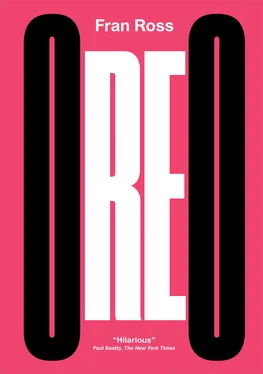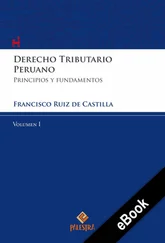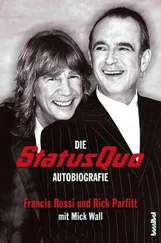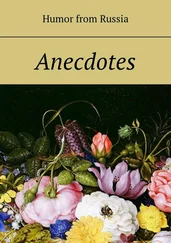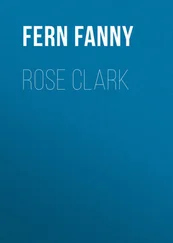Compared to more familiar works of African American literature, this book might seem at first glance bizarrely idiosyncratic, but precedents for it do exist. In certain respects it bears a striking resemblance to a text that was published in 1859, but not widely read until it was rediscovered and reprinted in 1983. The first known novel by an African American woman, Harriet E. Wilson’s provocatively titled Our Nig is the story of a freeborn woman of color, the indentured servant of a white Northern family who is treated little better than a slave. Like Wilson’s novel, Ross’s Oreo challenges received opinion about African Americans. Oreo is a character whose linguistic and cultural competence allows her to travel between two distinct minority cultures, while enjoying the resources of the dominant culture and exploring her own identity. Both Wilson and Ross have created intelligent African American female characters whose strategic placement within the white household allows them intimate knowledge of America’s family secrets. From a position at the intersection of black and white, both Wilson’s Frado and Ross’s Oreo articulate astute critiques of America’s hypocrisy about race. The two novels share other features. In each story, a young, attractive, plucky, defiant biracial heroine, in the absence of protectors, learns to defend herself against the physical aggression of hostile antagonists. Both authors employ innovative narrative strategies, resulting in complexly discursive, generically hybrid texts. Both novels were originally published in small first editions that were largely ignored; and because their works found few receptive readers in their lifetime, both authors remained virtually unknown until their books were rediscovered.
Frances Dolores Ross was born June 25, 1935, in Philadelphia, the eldest child and only daughter of Gerald Ross of Littleton, North Carolina, and Bernetta Bass Ross of Petersburg, Virginia. Her father, a welder, died in an automobile accident returning home from work in New Jersey in 1954. Her mother worked as a store clerk after attending Saint Augustine College in North Carolina. Fran Ross, whose childhood nickname was “Frosty,” is remembered as a precocious bookworm, an artistically inclined doodler, and a spirited athlete by her two younger brothers, Gerald Ross, Jr., and Richard Ross. Their maternal grandmother, Lena Bass Nelson, was employed as a cook for the Irish-American family of Arthur J. O’Neil, a Seagram’s Company vice president. Fran Ross and her brother Gerald often spent weekends at the home of the O’Neil family, helping “Big Mom” when her employers had large dinner parties. During school vacations, Fran also occasionally accompanied her grandmother to the O’Neil summer home on Lake Winnipesaukee in New Hampshire. The Ross family lived in Philadelphia in a Pearl Street house owned by Lena Bass and attended Mount Carmel Baptist Church.
As a child, Fran Ross often heard Yiddish spoken by the family of Samuel Koltoff, the Russian Jewish immigrant proprietor of the next-door corner store. Another Jewish family, the Millers, employed her brother Gerald in their neighborhood “five and dime” store. Ross attended George Brooks Elementary School and Shoemaker Junior High School. A few days before her sixteenth birthday, she graduated with honors from Overbrook High School, where the student body at the time was predominantly white and Jewish. Her brother Gerald’s classmate Wilt Chamberlain played varsity basketball in the same high school. Ross herself, a lifelong sports fan, played basketball at Camphor Memorial Church Center and with the Varsity Pantherettes at Richard Allen Youth Center. In high school, she was a member of the debate team, literary club, and art club; her interests included literature, drama, and cartoons. She received a full college scholarship and graduated in 1956 from Temple University with a B.S. degree in Communications, Journalism, and Theater. Ross sought work as a journalist and was employed for a time at Curtis Publishing Company, home of the Saturday Evening Post . Finding it difficult to get suitable employment in Philadelphia, she moved to New York in 1960. There she worked as a proofreader and copy editor at McGraw-Hill and later at Simon and Schuster, where, among other things, she proofread the first book written by Ed Koch, the mayor of New York City.
Oreo , Ross’s only novel, was released by Greyfalcon House in 1974. Although Ross never published another novel, she continued to work as a freelance writer and editor, while living “a bagel’s throw from Zabar’s in a terrace apartment on Riverside Drive in the same building as Jules Feiffer” ( Essence , 70). Ross wrote pieces for Essence , a magazine for black women, as well as for the feminist humor magazine Titters , and published a facetious article on black slang in Playboy magazine. Ross’s freelance activity supplemented her income as part owner and vice president of a mail-order company that produced educational media.
In 1977, on the strength of her published novel and a few sample television scripts, she interviewed for a job as a comedy writer for the controversial and short-lived Richard Pryor Show . Encouraged by the producer Rocco Urbisci, Ross had hoped that income from television work might allow her to complete a second novel; but with the expenses of her move from New York to Los Angeles, she barely broke even on the venture. Having given up her New York apartment, Ross was distressed to learn that the star had misgivings about committing himself to a weekly television schedule and submitting to network censorship of his outspoken humor. At an emotionally intense meeting of the show’s creators, Ross found herself pleading with the reluctant Pryor to go ahead with the network program, arguing that he could make an impact as a socially conscious black comedian. Although Pryor’s associates Paul Mooney and Urbisci collaborated with the comedian on other projects after the show was canceled, Ross scrambled for work at other studios. She soon discovered that she was even more of an anomaly as a black woman comedy writer in Los Angeles than she had been as an editor and author in New York. She submitted sample scripts and tried unsuccessfully to interest network executives in her idea for a pilot program featuring an African American character. Rather than pursuing her only offer — a possible job writing for the Pryor Show ’s competition, Laverne and Shirley —she returned to New York, where she continued to work in publishing and media until her death on September 17, 1985.
A black and white photograph of the author on the back of the novel’s original dust jacket shows a youthful-looking black woman with full lips and a kinky Afro hairstyle, wearing hoop earrings, a necklace of large beads, and a garment that might be a dashiki. The epitome of Afrocentric style, the author’s portrait seems to engage in a lively dialogue with the novel’s title and the eye-catching cover design created by Ann Grifalconi, an award-winning writer and illustrator of multicultural books for children, and the publisher of the original Oreo . The artwork features a cropped Nefertiti-like image of a smiling black woman wearing a star of David pendant. In the photograph, Ross poses in front of a sunny window, holding eyeglasses and a pencil in one hand, gazing skeptically at the camera, as if daring the photographer to try to capture her soul, as if challenging the reader to solve the riddle of Oreo . Although the author herself warned readers that the book is fiction rather than autobiography, the novel does incorporate or allude to a few circumstantial facts that are known of Ross’s life, including her education at Temple University (where Oreo’s parents meet), her journey from her Philadelphia birthplace to New York City (like her heroine’s odyssey), and her work in advertising and mass media (where Samuel Schwartz, Oreo’s father, earns his living).
Читать дальше
